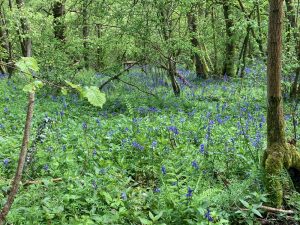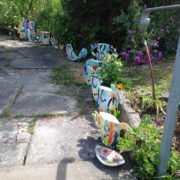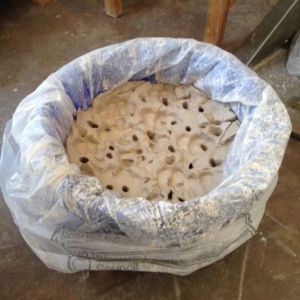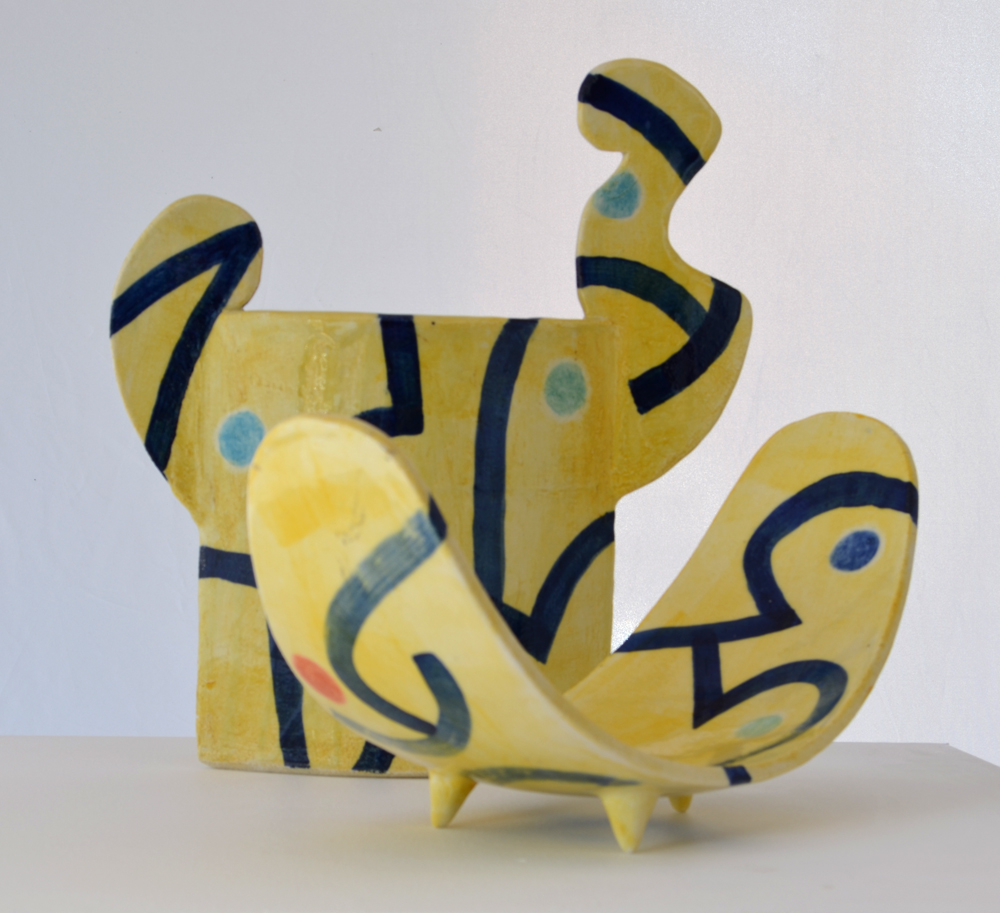In praise of tweeting
It struck me while I was walking up Bradlow Hill and into Frith Wood that though I meet people walking in the opposite direction, that is, coming towards me, I wonder if they meet people other than me. Because most people will sensibly choose the way that offers least effort, the one with a slow ascent into the woods and then the downhill walk along Bradlow Hill – I think I’m one of the few who do it the hard way, and that subsequently people get to see my face hoving into view more than others.
The reason I do it is for the reward of the view after the exercise, and as an indicator of how the ageing process is coming along. Legs get heavier with age. One of the walkers I met in the wood was a lady from Winchester who used to live in Malvern, but who comes to the Frith once a month to walk and relax. She said it uncluttered her mind and helped her relax – the quiet, the bluebells (see above), the birdsong and the relative wildness (compared to Winchester). Blackbirds, blue tits, black caps, chiff chaffs, a song thrush and a pheasant all contributed to calming the mind on this occasion. Birdsong should certainly be prescribed by doctors to treat mental health conditions, such as certain types of anxiety. Perhaps not the pheasant, they make strange metallic calls – the Pavarottis of the bird world they’re not.
Recently on BBC Radio 4 there was an intriguing programme by Sacha Dench on the plight of one of the world’s most persecuted birds, the vulture. However misunderstood they are (and they are), they shouldn’t be included in the doctors’ prescription: they make raspy, hissing sounds while feeding and fighting, along with grunting noises that can sound like hungry pigs or dogs barking in the distance. Luckily there aren’t any in Frith Wood or the Ledbury area.
Last week in Wales, on a family visit, I heard a Grasshopper Warbler for the first time. Its high, grasshopper-like song is usually what gives it away. Even when you hear one it can be difficult to locate it because of the way it throws its song. My daughter could hear it clearly, but it took me a while to catch the sound – it turns out that as we get older the first part of the hearing to deteriorate is the exact pitch the grasshopper warbler sings at. Sad to think most of us will stop hearing them at some stage in our lives, so I’m glad it happened. It’s a Red List species, and thus very rare. Click here to see a picture of one.
Here at Peter Arscott Ceramics we have sometimes been asked about birds and ceramics. Specifically, does bird poop affect outdoor ceramics, like birdbaths, for example. The answer is no, the vitrification of the glaze firing protects the ceramic from the acidity of the bird droppings. Research by PCA reveals that birds don’t have the same level of control over their sphincter muscles as humans or other mammals. This means they can’t hold their waste, leading to seemingly random pooping. These are the sort of facts you learn in this blog.
Whilst we’re on the subject, pooping while in flight is a way for birds to lighten their load and conserve energy, especially for longer flights. And they often have preferred areas for pooping, such as where they spend time or find food. They might poop on a garden bench, or near their nest, or, of course, on your head or your car, which is why it’s good there are no vultures in Ledbury.
Pablo Picasso used birds in his work, from the early paintings of pigeons roosting which can be seen at the Picasso Museum in Barcelona, to the famous dove of peace drawing. He also used them in his ceramics, both sculpturally and as motifs, as on this earthenware dish from the 1950s.
And thus, we finally come to ceramics (“About time”, says Spiro. “And why did you have to mention bird poop?”).
PAC’s creative juices are flowing in all directions. Although we are still in love with the basic idea of the vessel, or vase, as the basis for most work, the lure of the sculptural possibilities in ceramics often takes us down different paths. Using grogged stoneware clay, which lends itself to modelling, this large structural piece took shape after careful and deliberate work with weight and balance – remember that once in the kiln and at a temperature of 1200℃, a clay piece can easily flop about and collapse, depending on weight distribution.
On the other hand, and as a contrast (in character it is almost the opposite of the previous piece), this next one (above) was made in one session with no preparation or planning, and turned out in the shape it did, still retaining some practical use – you could possibly wash a small baby in it – but definitely pulling towards appearance for its own sake.
We’ve been producing “spontaneous” ceramics for a while – it’s not something new that PAC has stumbled on. The Swirl vase (above) came out of the studio in 2017. The Tutti Frutti jug (below) is from 2018.
Going back to the subject of birdsong and tranquility (not again!), the edge of the Frith was flecked with the white bloom of the hawthorn. Its flowers, typically white or pink, bloom in spring, often around May, giving rise to the name “Mayflower”, but its antispasmodic and nerving actions make it suitable for anxiety or nervous tension – it is also sacred to the fairies and is therefore considered unlucky to bring indoors.
We do keep a bird indoors in the studio. He is Murphy the Mallard and he’s always quacking jokes: Two vultures were eating a dead comedian. One looks to the other and says, “Does this taste funny to you?”




















































































